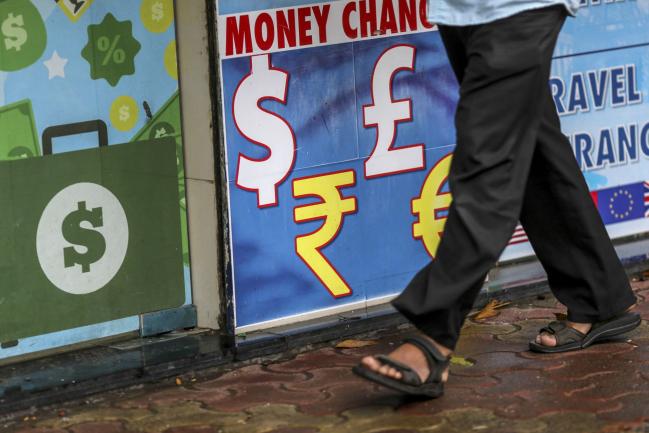(Bloomberg) -- India’s rupee declined the most in Asia, while sovereign bonds and stocks saw modest losses after Moody’s Investors Services lowered the nation’s rating outlook to negative citing growth concerns.
The reduction comes at a time when investors have been skeptical about the government meeting its budget targets amid a slowdown in tax revenues and September’s surprise $20 billion tax giveaway for companies.
The rupee weakened 0.4% to 71.2525 per dollar as of 9:55 a.m in Mumbai after falling to 71.2750, the lowest since Oct. 18. The yield on benchmark 10-year bonds rose three basis points and the S&P BSE Sensex index of shares fell 0.2%, halting its record-setting rally.
“It’s fair to say that the currency will face significant brunt from the news, giving away some of the recent strength and maybe more,” said Prakash Sakpal, economist at ING Groep (AS:INGA) NV in Singapore. “I won’t be surprised if INR spikes back above 72 in coming days.”
Indian assets have got a boost in recent weeks from strong overseas inflows. That’s after better-than-expected earnings in the September quarter stoked optimism that companies have weathered the worst of an economic slowdown following a series of government stimulus measures and five back-to-back rate cuts so far this year.
Foreigners have bought stocks worth $501 million in November, after pumping in more than $2 billion in October, and have been buyers of sovereign debt for nine straight sessions. Twenty-four of the 38 Nifty 50 firms that have posted earnings so far this season have beaten or matched the average analyst estimate.
Going Strong
The Sensex is still on course to mark its fourth weekly climb in five. The gauge’s 14-day relative strength index reached 74 on Thursday, above the level of 70 that some investors read as a signal to sell.
Not everyone expects the change in outlook to raise overseas borrowing costs for local companies. Indian firms may raise another $20 billion via offshore debt in the six months through March after seeking $25 billion in the six months ended September, Care Ratings said in a note Thursday.
“I don’t expect it to lead to any significant rise in borrowing costs as Moody’s is currently rating India a notch higher than Fitch Ratings and S&P Global Ratings,” which still hold the nation’s outlook at stable, said Ajeet Choudhary, executive director for fixed income at J.P. Morgan Private Bank in Asia. “I expect minor correction of 5-10bps in spreads for India IG papers.”
